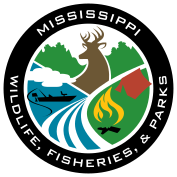
If you have questions about purchasing a license call 1-800-5GO-HUNT.
Written by: Chandler Strickland
Edits by: Pierce Young
Prescribed fire plays an essential role in creating and sustaining quality habitat in pine and upland hardwood systems. Wild turkeys are a species that rely on the use of regular prescribed fire to maintain their ideal habitat. A question that always arises with turkeys and the use of prescribed fire in MS is “Will burning in Spring during turkey nesting season going to negatively impact turkey populations”?
To answer this question there are many factors that come into play.
First, it is important to decide what your management goals are for the property. Is the goal to manage primarily for wild turkeys, or combination of game and non-game species? If your goal is to sustain and enhance your turkey population then the use of prescribed fire is necessary.
Secondly, what are the main goals in using prescribed fire and would burning during Spring help accomplish those goals. If many areas that you are wanting to burn have encroaching young tree saplings, causing less-than-ideal nesting areas for turkeys, a "growing season" burn can produce better results. If you miss burning this year, would the area be too difficult to burn next year due to the age of the vegetation.
Thirdly, if days during the year are limited to when you can conduct a prescribed fire, taking advantage of when burning conditions arise that match when you are available to burn are important.
Here is what we know from research regarding the effect prescribed fire has on nesting.
Even with all this knowledge there are still ways to decrease the risk of damaging nests with prescribed fire.
In conclusion, science shows little to no population level impacts on wild turkey nesting using prescribed fire. In fact, it shows the opposite. The benefits of early successional vegetation promoted by frequent fire outweighs the minimal potential risk of damaging wild turkey nests long-term. Landowners and land managers should continue to take advantage prescribed fire as a great management tool to enhance your property for wild turkeys. Burning during a less ideal time of the year is better than not burning at all.
For more information on wildlife management visit our webpage at
mdwfp.com/wildlife-management-info